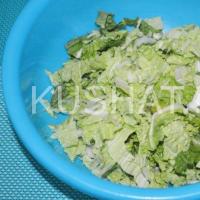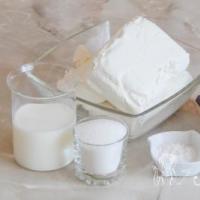The technology of cutting a log house with your own hands. Methods for cutting timber and logs: options for corner joints and their differences Technology of cutting a log house into a paw
The technology of cutting the walls of log houses “in the paw” is also called a clean corner, a complex and difficult task. Crowns (logs of a log house), corners, all joints of a log house with this cutting method are adjusted carefully and the slightest deviations can lead to irreparable consequences, for example:
The house will be blown out and no seals will help get rid of this shortcoming;
You can “fill up the corners”; if the verticality of the corners of the log house is violated, the house will stand crookedly, askew.
When starting to make a log house, the ends of the logs are carefully marked, starting with the log whose top in the upper cut has the smallest diameter, it is called the “standard”; the ends of other logs are marked according to the size of its legs. Errors in the marking of the paws lead to a violation of the verticality of the corners of the log house and their tightness. Therefore, marking the paws of the “corners” is the most crucial moment in the manufacture of a log house.
One edge, intended for the inside of the wall, is trimmed along the entire length of the log. The edge opposite the inner one is trimmed to a length equal to one and a half to two log diameters. The two remaining edges are trimmed to a length slightly larger than the diameter of the log.
Cutting “into a bowl” is easier to perform, but there is a problem of selecting wood according to its diameter, which is very noticeable at the ends and corners of the log house. The advantages of this method are that the corners are protected from rain by protruding parts of the logs, the disadvantages are that the corners are less durable and are susceptible to cracking in the sun, often the bowl is chosen at the bottom crown, water flows into this bowl and the corner begins to rot from the inside, it is difficult to finish the exterior of the log house.
Construction wooden houses and the baths are gaining unprecedented popularity. This is explained by the environmental friendliness and safety of wood, as well as the availability of assembly of wooden structures.
Modern felling of log houses is represented by both the simplest and technologically complex methods, which provide maximum protection of the finished log house from the adverse effects of the environment.
The final stage wood construction is the assembly of the log house. Often, for the construction of wall structures, rounded logs are used, which are securely connected to each other using special tenons and grooves.
Overview of log cutting methods
To understand how to properly cut a log house, you need to choose the most suitable way lumber connections.
The most popular logging technologies are Russian, Canadian, Swedish, Finnish and Norwegian. For each of them can be used various options log connections.
Canadian
Chopping in Canadian bowl is performed on round logs and has a number of advantages:
- Increases the service life of lumber.
- Provides additional protection of the log house from moisture penetration at the internal corners.
- Reduces heat losses.
- Maintains an optimal indoor microclimate.
- Simplifies in the channel provided for it.
Russian
Russian felling is one of the most sought-after and popular types of construction of wooden houses. Often, it is performed using a round chopped log.
This material is resistant to high moisture, mold and fungal infection. The fastening of logs using Russian technology is carried out in 2 ways - in the paw and in the head.
Finnish
To erect a wooden structure using Finnish technology, it is recommended to use round timber and timber prepared from coniferous trees. Preparation of material using Finnish technology is similar to the previous version. The insulating material is placed tightly and deeply between the logs, so it is completely invisible from the outside.
Norwegian
Norwegian technology involves the use of a log carriage with an oval cross-section. Otherwise, this technology is carried out similarly to the Canadian version. However, with this option for preparing logs, the walls are flat, which effectively saves space, especially in small buildings.
Swedish
Visually, Swedish technology differs from all others in the appearance of the resulting ends. In this case, the crowns are hewn in the form of hexagons. The bowl is also shaped like a ½ hexagon, making it easier to place crowns. Swedish felling is characterized by the complexity of installation and high financial investments.
How to properly cut any type of log house in order to end up with a practical and durable structure? This process involves sawing or cutting out special corner joints and longitudinal grooves on a beam or log for reliable installation of crowns. This can be done in several ways.
Method of cutting "in the cloud"
Logging is the simplest and most affordable option for constructing various types of log houses, which is done manually. The preparation process itself building material does not require large time and labor costs.
This method involves removing logs from the corners of the log house at a distance of up to 25 cm, which leads to a reduction in the size of the finished structure on all sides. For this reason, it has another name - cutting with residue.
This construction option provides additional strength to the structure, and protruding elements protect the corners of the frame from damage and destruction.
The bowl is made in the shape of a semicircle with a smooth surface and is not equipped with locks. To prevent possible rotting of logs, it is recommended to carry out timely inspections outside and inside.
“Bowl” cutting method
Cutting into a bowl is an intermediate option between okhlop and oblo, it is performed in half a tree, while the chopped bowl can be positioned up or down.
Arranging the logs with the bowls facing down is not only convenient, but also practical. This will prevent the accumulation of excess moisture in the cups and protect the joints from rotting. Preparing logs with the bowls down is often called “slamming” due to the fact that the upper element of the structure is placed with the bowl on the lower one, as if slamming it down.
This option for preparing logs eliminates the formation of unwanted voids in the joints between the crowns.
Many novice craftsmen may wonder how to cut a log house into a bowl or thicket correctly? All work is carried out in the following order:
- The future log house is marked and the logs are prepared in accordance with the required parameters. Each whip is numbered.
- The size of the bowl should be equal to ½ the thickness of the log. Stepping back 22 cm from the edge, markings are applied with a pencil or nail.
- Processing is performed with a chainsaw or cleaver to obtain even and smooth edges of the bowl.
- A tenon for the bowl is made in the lower log, and a groove is made in the upper log. During the assembly process, insulation is placed between the individual elements. The crowns are assembled with the bowl facing down. This is required in order to prevent moisture from entering the joints when fully loaded.
The “paw” cutting method
Foot-cutting involves laying logs in such a way that they do not extend beyond external corners. This method requires serious preparation and adherence to the technology of laying individual elements.
Reliable connection of the crowns is ensured by the presence of double locks in the corners of the building. Inaccuracies in the installation of logs can lead to the appearance of cracks and gaps in finished design, which in the future is fraught with large heat losses.
To improve thermal conductivity in the corners of the log house when using this processing method, it is recommended to carry out additional insulation and external cladding.
The “paw-on” processing method ensures an increase in the usable area of the premises while maintaining the length of the log used.
Work on the construction of a log house using this method is carried out in the following order: first the lower crowns are laid, then the wooden base for the floor, then the flooring is laid and the construction of wall structures continues.
You can cut a log house yourself by preparing high-quality lumber and choosing the most suitable laying technology. The finished log house is durable, practical and easy to maintain, so it can last for decades.
Today, wooden buildings are becoming increasingly popular. But, since hiring qualified builders to build a house made of wood is not a cheap pleasure, many take on the construction of a log house on their own, however, without sufficient knowledge and skills, they end up not getting the result they expected. To successfully complete such work, you need to at least understand how to cut a log into a paw and how to cut into a bowl.
Advantages and disadvantages of felling
A special feature of forcing a log into a paw is that the ends of the logs do not protrude beyond the corners of the building under construction. The main advantage of this method is the relative ease of cutting grooves compared to cutting into a bowl. Not the least role in the popularity of this cutting method is played by the fact that when using it, timber or round timber is used for its entire length, without any residue, which allows you to save on material.

But still, this cutting method also has significant disadvantages. Log houses driven out in this way are less stable. In addition, their corners turn out to be cold, poorly retaining heat inside the building. Therefore, additional insulation is required for residential buildings that have been cut down into claws.
However, this minus can easily be turned into a plus: it is enough to cover the inside surface of the house with beautiful finishing materials, for example, siding, and the problem will be eliminated. Moreover, such a finish will also look quite impressive. For a frame made into a bowl, with protruding ends of the corners, such finishing is impossible.
Marking the log house
Despite the relative simplicity of making grooves, it is possible to properly cut a log house into a paw only if the ends of the logs or timber are correctly marked. When using timber, it is always better to take material of the same thickness, and the thicker the timber, the fewer connecting grooves there will be in the corners, and accordingly, such a house will become warmer. When cutting a log house from logs, you should always take a log with a thinner end as a sample and adjust the rest to it.
For marking, it is much more convenient to make special templates than to work with each end separately. Such templates are made from thick cardboard, and markings are carried out with their help by simply applying them to the ends of the logs.
To cut a log house you will need the following tools:

Cutting the corners of the walls “in the paw” and the order of its marking.
- saw;
- axe;
- bit;
- plane;
- roulette;
- level;
- plumb line;
- hammer;
- mallet.
Using a plane, you need to completely sand the side of the logs or beams that will be laid inside the room. The opposite side is processed only at the ends; the processed length of the sections should be in the range from 2 to 2.5 log diameters. The two remaining sides are equal at the ends by 1-1.5 times the diameter of the log each.
Chopping technique
Cutting a log house always begins with laying the first, so-called frame crown. In the selected area, 2 logs are laid parallel to each other, on the ends of which the next 2 are placed at right angles. The result is a square, which is adjusted according to the level into a single plane.
Markings are made at the ends and grooves are made for planting logs. The total depth of the groove should not exceed half the thickness of the log.
You should always choose the thickest logs for the installation of the rim.
After all, the quality and reliability of the entire future log house largely depends on how correctly and evenly it is laid out.

A log is placed in the groove made on top, with top part prepared for laying the next log. The grooves must be marked and prepared in such a way that when laying the next crown, it fits into the prepared groove as accurately as possible. And this concerns not only the accuracy of the crown entering the nest, but also the constant control of both horizontal and vertical placement of the crowns.
When forcing a log house into the paw, the technique for laying crowns from timber and logs is somewhat different. Wooden beam, which has smooth edges, is simply installed crown on crown. If it is made of logs, then the upper crown has to be laid on the rounded surface of the lower one.
To make the crowns fit more tightly, a longitudinal groove is made in the lower part of the upper crown along its entire length. Then the upper crown is placed in the frame and watch how it fits to the lower one. If the tightness of the fit is insufficient, the upper crown is removed, the groove is corrected and the entire installation procedure is repeated from the beginning. And only after ensuring that the crowns fit snugly against each other can you move on to the next crown.
Often, due to the inexperience of the carpenter, the “feet” in the corners cannot be fitted tightly enough, and gaps appear between them. If these cracks cannot be removed with an ax, then they need to be eliminated by driving a wooden wedge of suitable thickness and width into the crack. But it’s better to try to do without such connections.
Fixing the crowns
When cutting a log into a claw, additional fixation of the crowns is much more important than when cutting into a bowl. Fixing logs when cutting into a paw is carried out in two ways: using inserted or root tenons. The first is simpler to perform, while the second fixes the logs more securely.
The first option involves installing 2 connected crowns of vertical holes Ø 3-4 cm in the “paws”. A wooden stake of the same diameter is driven into these holes. In each paw, with the exception of the frame crowns, there are two such straight tenons, and they are inserted in a checkerboard pattern so as not to get one wooden peg on top of another. To enhance the overall rigidity of the structure, straight tenons are often driven in along the entire length of the crowns in increments of 1.5-2 m.
Experienced carpenters, in order to give greater strength to the corner joint, when chopping a log house into a paw, often install a special tenon at the junction of the crowns, called the “root” one. It is located in each underlying crown and has the appearance of a small (from 2 to 4 cm, depending on the thickness of the log) protrusion. There is an unwritten rule that the area of the main tenon should be a quarter of the total working area of the paw. Such a protrusion is always made from the side of the inner corner, and a groove of the same shape and depth is made on the crown superimposed on top.
If theoretically you know everything about how to cut a log house, but you do not have enough practical experience, then before moving directly to cutting a log house, it is better to play it safe and do a test cutting on 2-3 logs. If you manage to connect them into a paw without visible gaps, then you can always use them for a log house. Well, if it doesn’t work out the first time, then you will have a clear opportunity to see, analyze the reasons for the failure, and then carry out the felling of the log house correctly in the future.
Log houses have been used for hundreds of years; for Russia this is a truly traditional technology, proven over centuries. There are several options for connecting logs in a log house: The most common are the “bowl” frame and the “paw” frame (this connection is often called the “dovetail”). Why is it convenient, and how to do it?Advantages of building a log house “in the paw”
Framing a house “into the claw” is more difficult to execute than the traditional version “into the bowl”: there is a much greater risk of “bumping the corners” by warping the walls of the house. The end of each log must be processed with geometric precision, otherwise there will be constant drafts in the house, which no insulation can cope with. However, even with such difficulties, the technology of a log house “in the paw” does not lose its fans. The log house for a bathhouse “in the paw” is used as often as for country house, since this design has several important advantages. Despite the fact that this is not the most energy efficient option, it has its clear advantages:- This is an economical solution that allows you to use the entire length of the logs. There are no protruding ends, which means that all the material will be used with maximum efficiency.
Significant savings have made this method popular; ordering production from professionals is not so expensive. In addition, you can try to cope with the construction yourself.
- There are no problems with exterior decoration. It could be vinyl siding or other modern materials, which will be easy to join due to the correct, even angles. Finishing the corners of the log house “in the paw” does not require excessive consumption of material, which will be an additional economic benefit.
- Aesthetic appearance and neat contours of the house. The building looks great, meeting all the traditions of wooden construction, while the design can be diversified by modern options finishing.
Loghouse construction technology
Required exact calculation to determine the size of the “foot”, that is, the connection point. It is important to take into account that the lower part of the tree is always thicker than the upper part and there cannot be a tree that is strictly ideal in size. To prevent the “paws” from starting to creep apart the assembly field, a tenon is made in the upper part of each connecting element, and a groove is made in the lower part to provide additional fastening. An edging is cut out from the inside, which will stretch along the entire length. This will provide the house with smooth walls that are convenient for finishing. The length of the edging on the outside is 1.5-2 diameters.For complex markings of logs, you can use paper templates that are glued to the end of the log. If there is no experience, the work of preparing connections will be very labor-intensive even with the use of all modern tools.A frame made from “hand-to-hand” timber, just like from a log, is assembled using a completely understandable technology. If the markings and fastening elements were done correctly, it is usually not difficult to build a house in a very limited time. The technology looks like this:
- A layer of roofing material is laid on the foundation as waterproofing, and then the first crown, which is called the flashing, is assembled on it from the thickest logs. The second crown of the log house is called the main one; logs are cut into it for subsequent laying of the floor.
- A semicircular groove is made in the logs of each subsequent crown, which should stretch along the entire length. It is needed for a tighter fit of the logs to provide protection against heat loss.
After making the groove, you need to check how tightly the upper log will fit against the lower one. If necessary, it needs to be trimmed.
- The junction of the crowns must be laid with insulation: usually they use roll materials of natural origin: jute, tow, etc., which has a beneficial effect on the environmental friendliness of the home.
- When laying crowns, be sure to check the verticality of the walls, making timely adjustments. When the log house is assembled, it is left for some time to dry and shrink. After this, it is necessary to additionally caulk the cracks.
With proper marking and laying, the corners of the frame “into the paw” should be as even as possible. Modern tools greatly simplify and speed up the work: with the help of a chainsaw, with a certain skill, you can achieve geometrically correct angles and precise fit of the edges of the “paws” in the joint. However, working with any tools requires experience and strict adherence to safety precautions.
Additional features of the log house “in the paw”
Since in the lower part, the butt, the log is wider than at the top, when laying it is necessary to alternate the tops and butts, then the wall will be even. After the construction of the log house, the wood must be treated with special compounds that will protect it from rotting and insects. Additional treatment with fire retardants is desirable, which increases fire safety. A log house “in the paw” requires mandatory thermal insulation of the corners, otherwise it will be cold in the house. Over time, cracks may appear at the joints of logs due to drying of the wood. They must be closed in a timely manner by placing wedges or insulation materials.A log house “in the paw” is a labor-intensive but beautiful solution that allows you to simplify the external and interior decoration. Such a house will look beautiful, will last a long time, and the right technology construction and insulation, there will be no problems with heat loss. Classic log building technology will provide the home with comfort and reliability.
This notch is the logical conclusion of the technology for making a notch “in the okhryap”. We do not consider cutting “in the okhryap”, since it is not widely used when cutting round logs. Although cutting into the hole itself is not difficult. The bowls are marked on both sides of the log and chopped to 1/3 of the depth, scraping the bottom of the bowl flat. If the ends of the logs are cut into two vertical planes or completely trim the log into two edges, then the cutting is simplified, the semicircular walls of the bowl disappear and it becomes possible to make straight cuts. The sawn end of the log turns the angular binding of logs or carriages into a “toe-to-foot” notch. The end of the log, hewn into two edges, received beautiful name- "boob."
The longitudinal groove of logs during corner cuts “into the paw” can be made both from the bottom and from the top side of the log.
Before starting to make “boobs,” all the logs are inspected and the log that has the smallest thickness at the end is found. The log is placed on pads and secured with staples. Using a level or plumb line, vertical lines are drawn at the centers of the ends of the log, to which perpendiculars are drawn and two more vertical lines are drawn - the lines of plumbing the ends of the log into “boobs”. Each log will have two “logs” of equal thickness, but different heights. The side cheeks of the “boobs” located at different ends of the log must be strictly in the same plane, therefore, when marking, the log must remain motionless.
Using “blocks” you can cut all the logs going to the log house at once. The width and length of the “booties” are constant for all logs, but the height is different and depends on the diameter of the logs. The width(s) of the “logs” of all logs is made equal to 2/3–3/4 of the thickness of the thinnest cut (end), the length (L) is equal to large diameter logs
Next, on the “block” of the thinnest log, the humps are sawed and chopped off to a depth equal to the thickness of the “block” (a). That is, at the end of the log a parallelepiped is obtained, which is divided into 8 equal parts with a pencil grid. According to the diagram shown in Figure 17, a “paw” with the required slopes of the planes is marked and cut out. The “paw” is made with or without a cut. Based on the finished “paw”, plywood or cardboard templates are made. The remaining paws are made according to templates, placing them on the “boobs” of other logs, or using the irreplaceable carpentry tool “devil”.
Rice. 17. Marking a corner cut into a paw on a log
When using the “dash”, the manufacture of a log house begins with laying two frame logs (lower crown) and leveling their tops to the horizon. To level the logs into the horizon, the lower humps are trimmed with them. The top of the “feet” of the flashing logs is marked according to previously prepared templates or on a grid. There is no need to mark the bottom of the “paws”. Next, transverse logs with hewn “blocks” are laid on the side logs. The legs of the “dash” are moved apart by an amount corresponding to the design width of the longitudinal groove (see the chapter “Making a longitudinal groove”) and, without changing the position of the legs, the “foot” of the upper log is drawn. When marking, the “line” repeats the slopes of the planes of the lower “foot” and transfers them to the upper one (Fig. 18). In practice, choosing the correct width of the longitudinal groove is often neglected, so more often the “line” is simply moved apart to such a size that it can scratch the end of the “block” being cut without crawling onto the hump of the “block”. Then the log is removed and the “paw” is cut out. The top of the paw is made symmetrical to the bottom.
 rice. 18. Drawing the paw
rice. 18. Drawing the paw When laying subsequent crowns, simultaneously with marking the “foot”, mark the longitudinal groove (Fig. 19). First, a longitudinal groove is marked, then, without changing the size of the extension of the legs, the “lines” are drawn on the paw. Or vice versa, if the paw is ready, take a “line” to measure the size of the gap between the paws and transfer it to drawing the longitudinal groove.
 rice. 19. Marking the longitudinal groove of logs when chopping into the paw
rice. 19. Marking the longitudinal groove of logs when chopping into the paw As you can see, the dimensions of the “paws” obey geometric laws and depend on the diameter of the thinnest log. If all the logs of the log house are approximately the same diameter, then you can not draw them, but use the technical documentation: GOST 30974–2002 “Corner connections of wooden block and log low-rise buildings”, which regulates the dimensions of the feet for logs of different diameters. Make templates according to the given dimensions and cut out the “paws” according to them.
 Light fitness salad with Chinese cabbage and bell pepper Chinese cabbage salad with red pepper
Light fitness salad with Chinese cabbage and bell pepper Chinese cabbage salad with red pepper Soft chocolate processed cheese
Soft chocolate processed cheese Nekrasov's poem "Grandfather": analysis and characteristics of the work
Nekrasov's poem "Grandfather": analysis and characteristics of the work Rostov Basic Medical College Rostov Basic Medical College who studies
Rostov Basic Medical College Rostov Basic Medical College who studies Teacher remuneration system
Teacher remuneration system Legal compass: what the payslip hides How income tax is calculated in Belarus
Legal compass: what the payslip hides How income tax is calculated in Belarus Archpriest Andrei Tkachev: biography, family
Archpriest Andrei Tkachev: biography, family